Seaweeds of the South African South Coast


Order Ulvales
Family Ulvaceae
Letterstedtia insignis Areschoug 1850: 2, pl. I
Plants dark grass-green in young parts grading to pale yellow in central part of fronds, 20-50 cm tall, texture flexible in young parts to stiff in older basal parts; thallus shape varying from bushy with deeply incised fronds to many narrow strap-shaped fronds with marginal frills or leaflets; marked thickening in midrib and basal area; holdfast callus-like, up to 2 cm in diameter, bearing one to several distinct fronds. Lamina ca. 75-100 µm thick, comprising two cell layers with their inner walls in close contact and sometimes partly fused; in cross section cells near edge of lamina ca. 30 µm high x 16 µm broad. In surface view cells ca. 15-20 µm in diameter, angular. Thickening of midrib and basal region of thallus produced by separation of two cell layers by trabeculae interspersed with thick-walled rhizoids. Growth from diffuse meristematic tissue in all young parts of frond. Holdfast with central zone of rhizoids growing down from between two cell layers, re-inforced by trabeculae and wall substance, enclosed by callus extending up lower thallus. Reproduction in any young parts of fronds; fertile areas clearly delimited within zones of thick-walled vegetative cells; after shedding of gametes, transparent evacuated areas of tissue sloughed off.
Collections, ecology and regional distribution
Recorded from Port Alfred to Durban (39-51) but see note below. Reported to occur in the shallow eulittoral and littoral fringe, but see note below.
World distribution: Also reported from New Zealand (Broady et al. 2012).
Type locality: near Port Natal (Durban), South Africa (Pocock 1959).
Notes:
1. Letterstedtia is distinguished from Ulva by having: a complex morphology (various types of blade appendages), a massive holdfast and wart-like callus, thickening involving rhizoids and transverse trabeculae, frills on the blade straps, and reproduction in any meristematic region.
2. Despite Pocock having made repeated collections (there are many specimens in GRA) of this species from Salt Vlei (near the Kowie mouth) and Waterloo Bay, and the existence of herbarium specimens from other locations in the Eastern Cape, we have repeatedly searched for it in the former two locations but never found it. Interestingly, Pocock records that it although the type locality is Durban Bay, it was never subsequently found there. However, we collected a small specimen in Nature’s Valley (D77) that may belong to this species, based on the thickened midrib area with trabeculae, frilled frond margins and arrangement and size of cells (see illustrations of specimen D77).
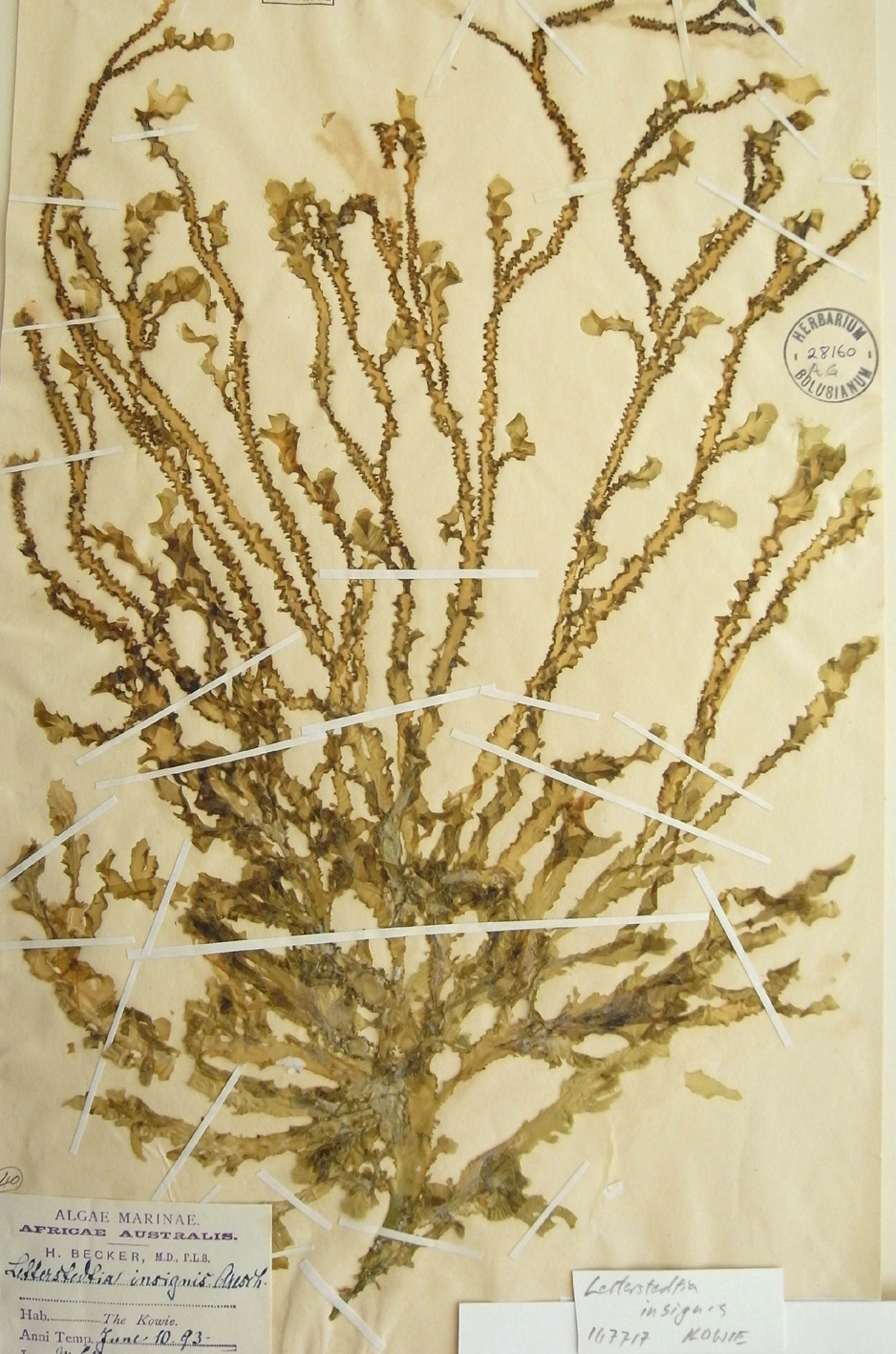
Letterstedtia insignis, Port Alfred (herbarium specimen, BOL)
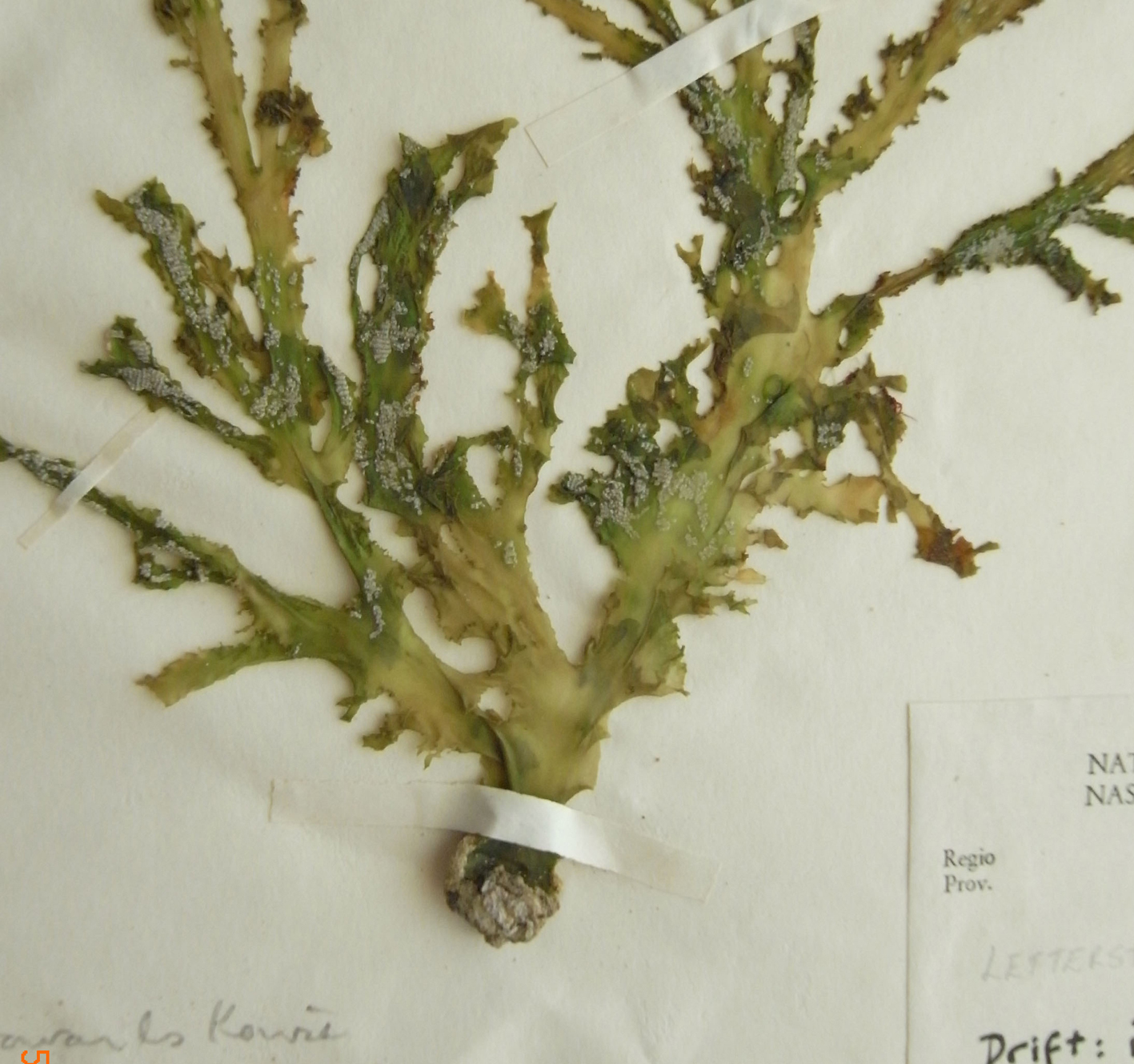
Letterstedtia insignis, Port Alfred, basal region and holdfast (herbarium specimen)
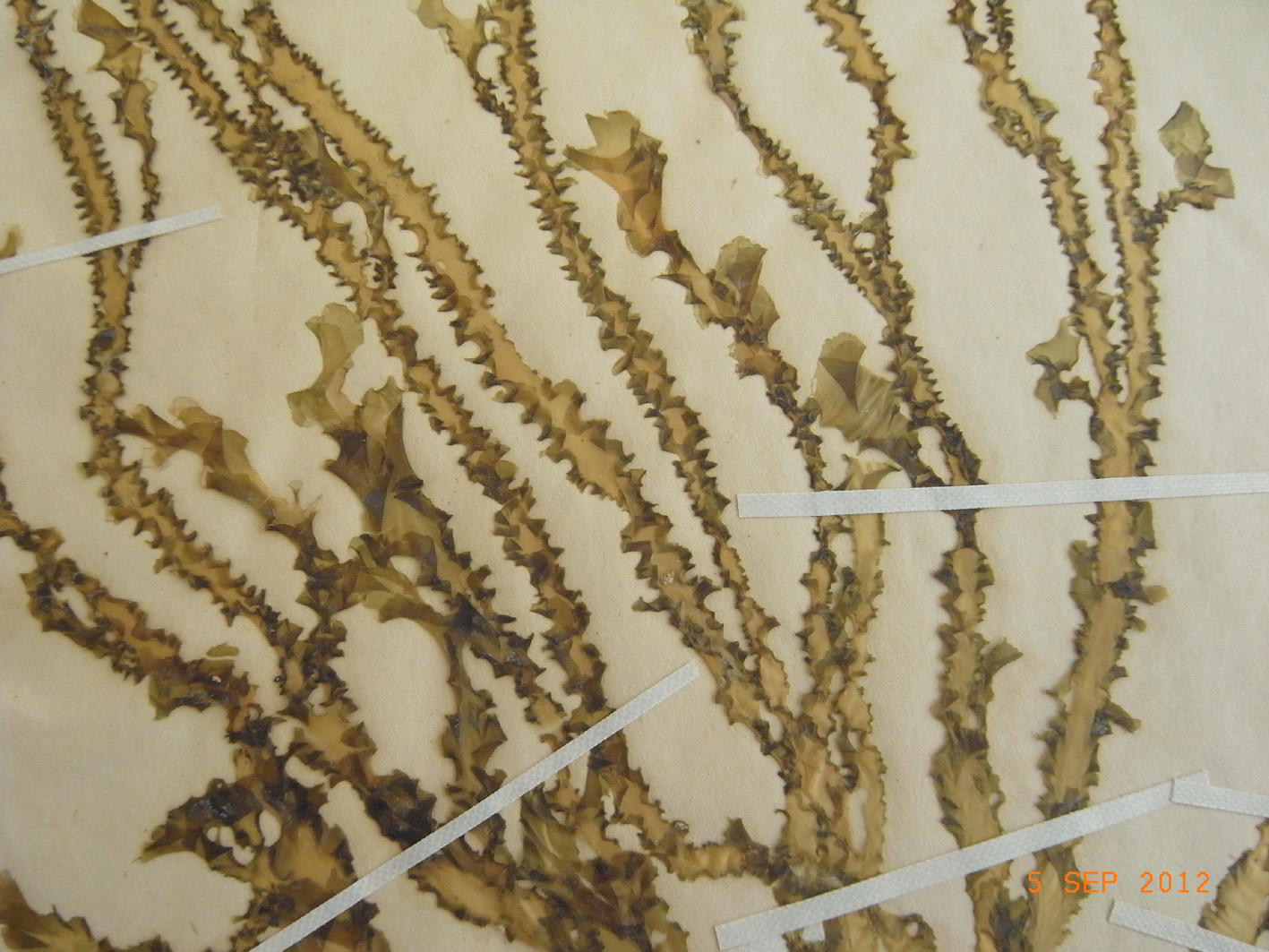
Letterstedtia insignis, Port Alfred, mid-upper region (herbarium specimen, BOL)
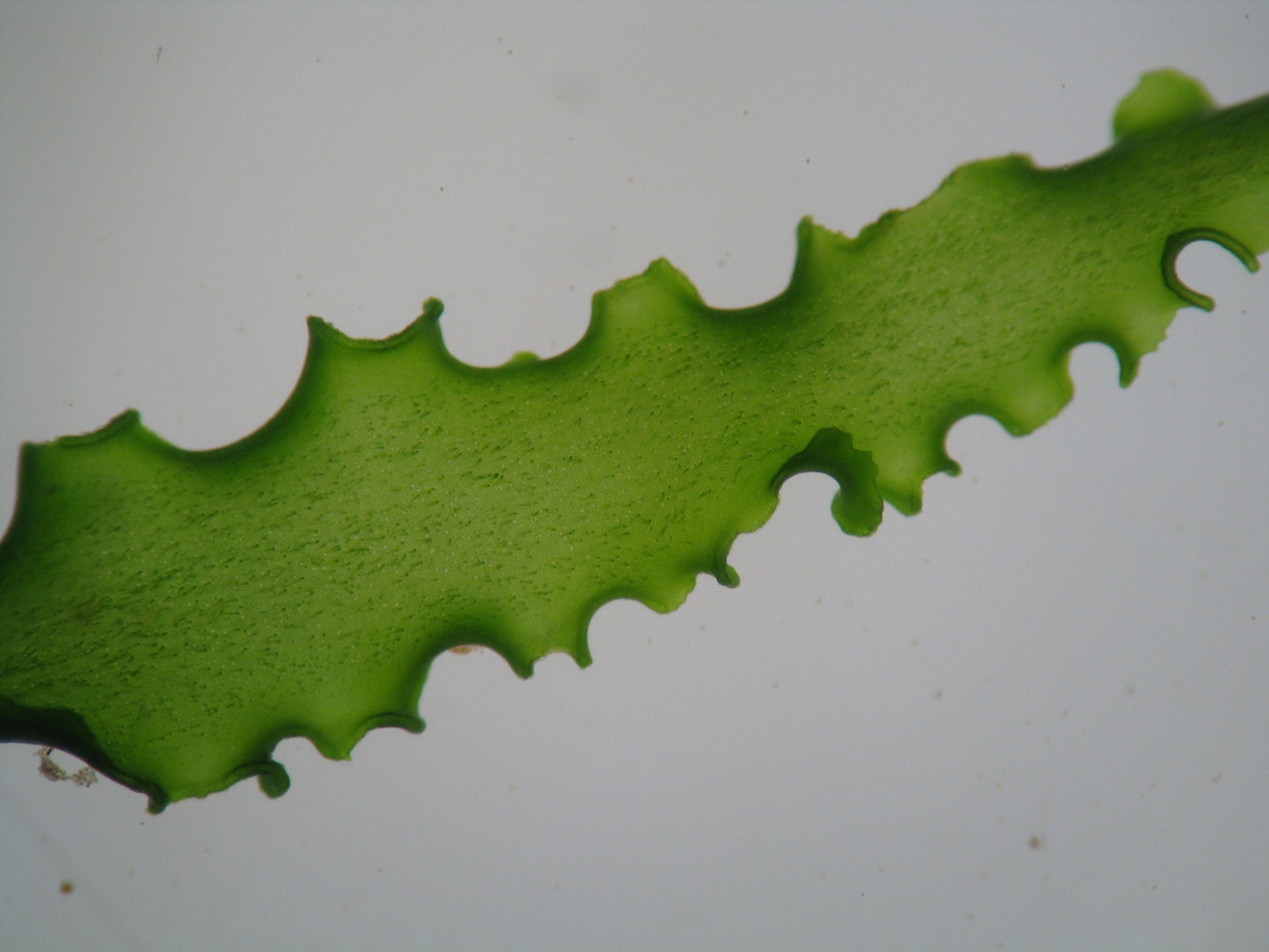
Letterstedtia insignis? Nature’s Valley, specimen D77, fresh material – see note
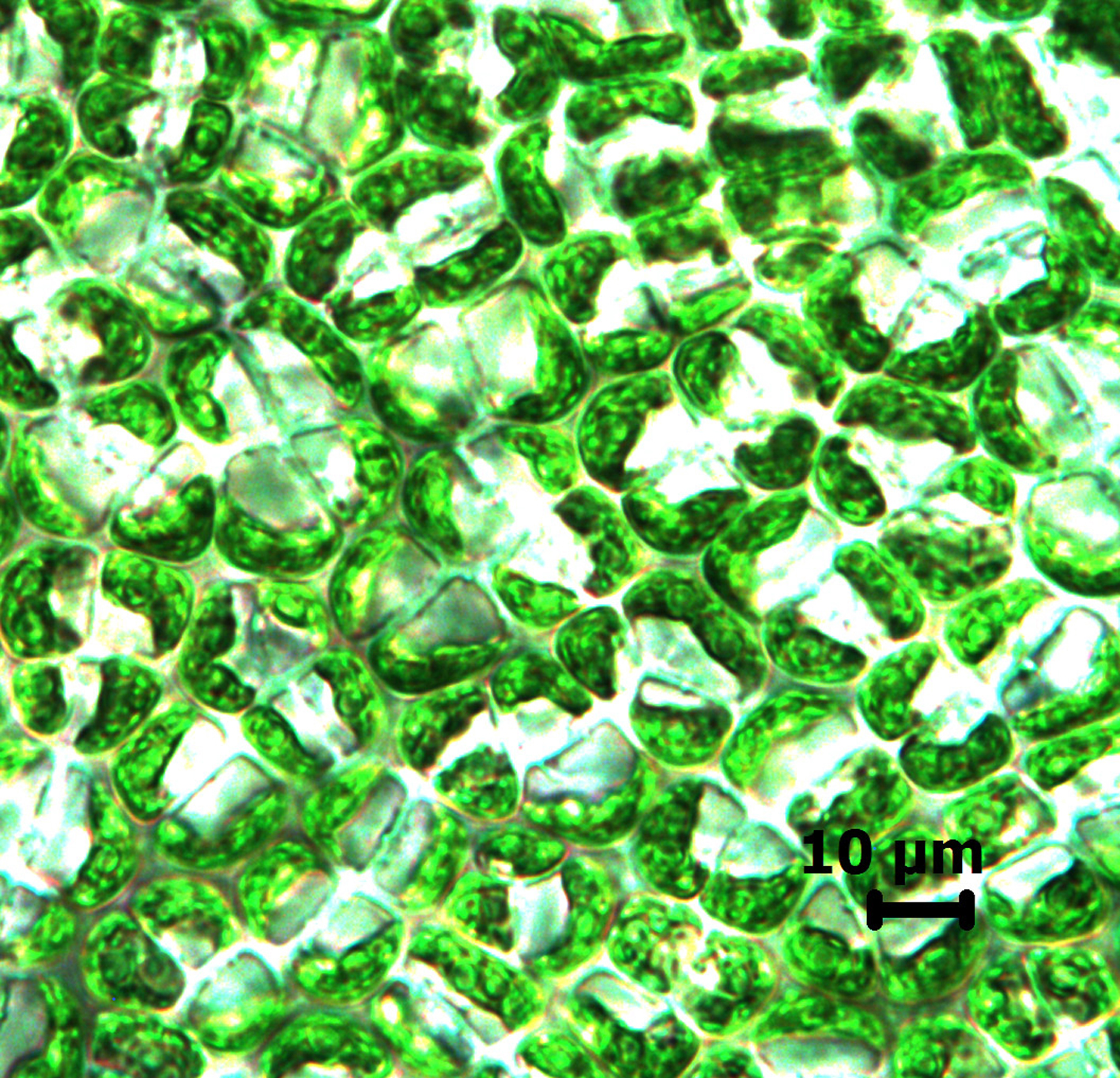
Letterstedtia insignis? Nature’s Valley, surface view of cells, some dividing, specimen D77, fresh material – see note
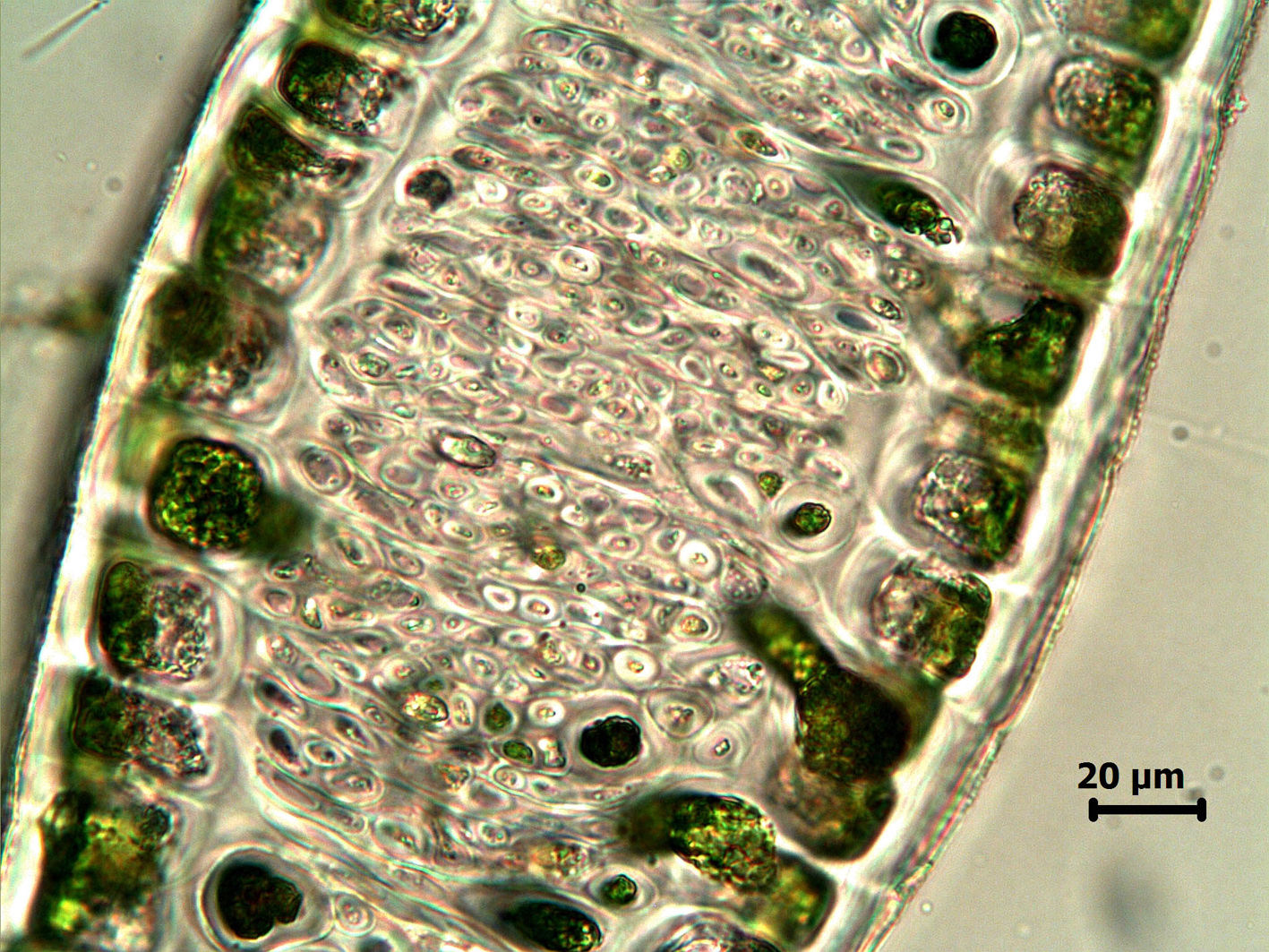
Letterstedtia insignis. XS through midrib showing trabeculae and rhizoids (slide specimen EC 2017)
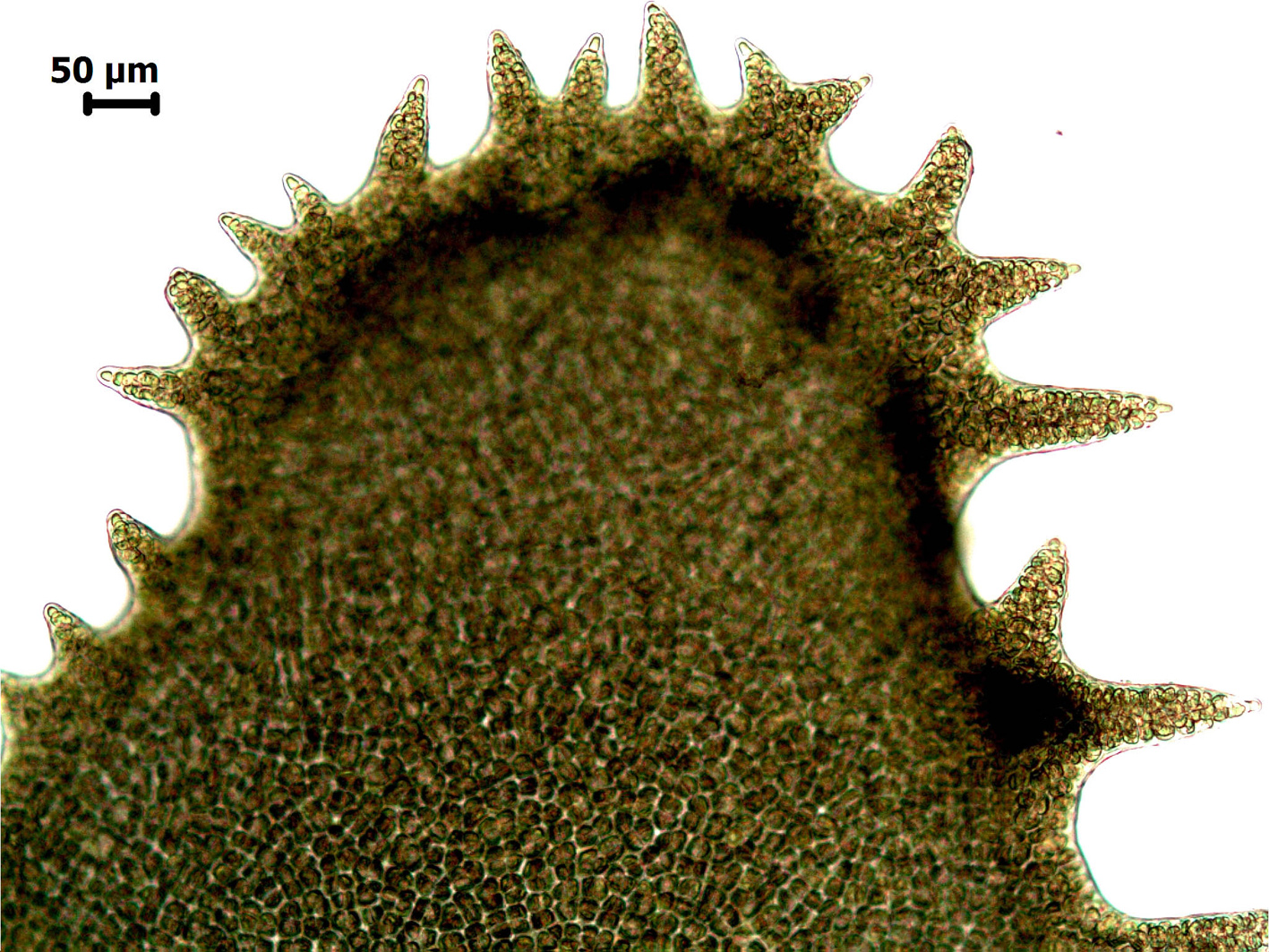
Letterstedtia insignis, showing minute teeth on apical margin of a blade (slide specimen EC 2169)
References Letterstedtia
Areschoug, J.E. (1850). Phyceae extraeuropaeae exsiccatae. Vol. 1 pp. 1-30. Uppsala.
Broady, P.A., Flint, E.A., Nelson, W.A., Cassie Coope, V., De Winton, M.D. & Novis, P.M. (2012). Phylum Chlorophyta and Charophyta: green algae. In: New Zealand inventory of biodiversity. Volume Three. Kingdoms Bacteria, Protozoa, Chromista, Plantae, Fungi. (Gordon, D.P. Eds), pp. 347-381. Christchurch: Canterbury University Press.
Pocock, M.A. (1959). Letterstedtia insignis Areschoug. Hydrobiologia 14: 1-71, 5 figs, 2 plates.
Cite this record as:
Anderson RJ, Stegenga H, Bolton JJ. 2016. Seaweeds of the South African South Coast.
World Wide Web electronic publication, University of Cape Town, http://southafrseaweeds.uct.ac.za; Accessed on 19 January 2026.